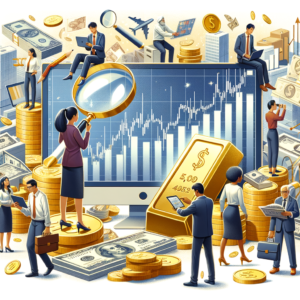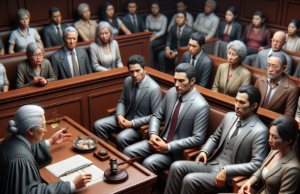In the realm of governance, executive orders have emerged as powerful tools for presidents to enact policy swiftly and decisively. As the political landscape evolves, the implications of these orders extend beyond immediate governance, shaping public opinion and societal norms. This article delves into the nature of executive orders, their historical context, mechanisms of issuance, recent trends, and their long-term effects on society, ultimately exploring the future of executive orders in modern governance.
Understanding Executive Orders: Definition and Historical Context in Governance
Executive orders are legally binding directives issued by the President of the United States to manage the operations of the federal government. Rooted in the Constitution, specifically Article II, which grants the president executive power, these orders have played a significant role in American governance since the founding of the republic. Historically, executive orders have been used to address a wide array of issues, from national security to civil rights. Notable examples include President Abraham Lincoln’s Emancipation Proclamation and President Franklin D. Roosevelt’s order to intern Japanese Americans during World War II. Over time, the use of executive orders has expanded, reflecting the changing dynamics of political power and the need for swift action in times of crisis.
The Mechanisms of Executive Orders: How They Are Issued and Implemented
The process of issuing an executive order typically begins with the president drafting the order, often in consultation with advisors and legal experts. Once finalized, the order is signed and published in the Federal Register, which serves as the official record of federal government actions. Implementation of executive orders falls to various federal agencies, which are responsible for translating the directives into actionable policies. While executive orders can expedite decision-making and bypass legislative gridlock, they are not without limitations. Congress retains the authority to overturn executive orders through legislation or, in some cases, the courts can challenge their legality, creating a complex interplay between the executive and legislative branches.
Analyzing Recent Executive Orders: Key Areas of Focus and Their Implications
In recent years, executive orders have increasingly focused on critical issues such as climate change, immigration, healthcare, and economic recovery. For instance, President Joe Biden’s executive orders aimed at rejoining the Paris Agreement and reversing previous immigration policies underscore a shift toward addressing pressing global challenges and promoting social equity. These orders not only reflect the administration’s priorities but also signal a broader commitment to policy changes that resonate with public sentiment. The implications of these actions are profound, as they can lead to significant shifts in regulatory frameworks and influence the direction of national discourse on these vital issues.
The Political Landscape: How Executive Orders Shape Policy and Public Opinion
Executive orders often serve as a barometer of the political climate, influencing both policy and public opinion. They can galvanize support or opposition among various stakeholders, including political parties, advocacy groups, and the general public. For example, executive actions on environmental regulations can mobilize grassroots movements, while controversial orders may provoke legal challenges and public protests. The ability of executive orders to bypass the legislative process allows presidents to respond quickly to emerging issues, but this can also lead to polarization, as opponents may view such actions as overreach. Thus, the political ramifications of executive orders extend beyond immediate policy changes, shaping the broader narrative of governance and civic engagement.
Case Studies: Notable Executive Orders and Their Long-Term Effects on Society
Several notable executive orders have had lasting impacts on American society. President Lyndon B. Johnson’s Executive Order 11246, which established affirmative action policies in federal contracting, significantly altered the landscape of employment and civil rights in the United States. Similarly, President Barack Obama’s Deferred Action for Childhood Arrivals (DACA) program provided temporary relief to undocumented immigrants brought to the U.S. as children, influencing immigration policy and public discourse for years. These case studies illustrate how executive orders can serve as catalysts for social change, prompting shifts in public attitudes and legislative responses that resonate long after the orders are issued.
Future Outlook: The Evolving Role of Executive Orders in Modern Governance
As the political landscape continues to evolve, the role of executive orders is likely to expand further, driven by the increasing complexity of global challenges and domestic issues. Future presidents may rely on executive orders to address urgent matters such as public health crises, economic inequality, and climate change, particularly in an era marked by partisan divisions and legislative gridlock. However, the potential for executive overreach remains a concern, prompting calls for greater transparency and accountability in the issuance of these orders. As society grapples with the implications of executive actions, the ongoing dialogue surrounding their use will be crucial in shaping the future of governance in the United States.
In conclusion, executive orders represent a significant mechanism through which presidents can influence policy and governance in the United States. Their historical context, mechanisms of issuance, and implications for society reveal a complex interplay between authority and accountability. As we look to the future, the evolving role of executive orders will undoubtedly continue to shape the political landscape, prompting ongoing discussions about their impact on democracy, public policy, and the fabric of American society.





























